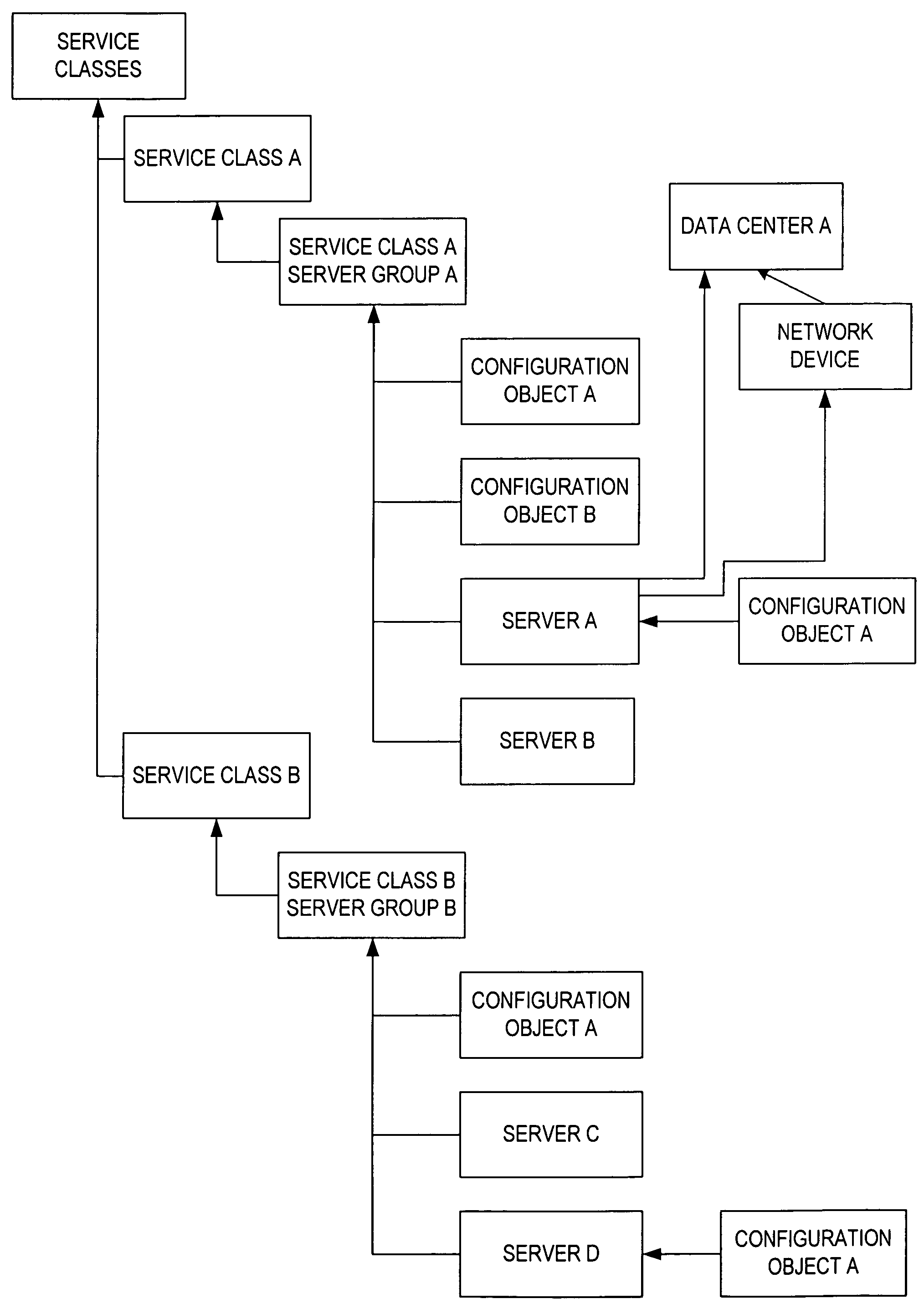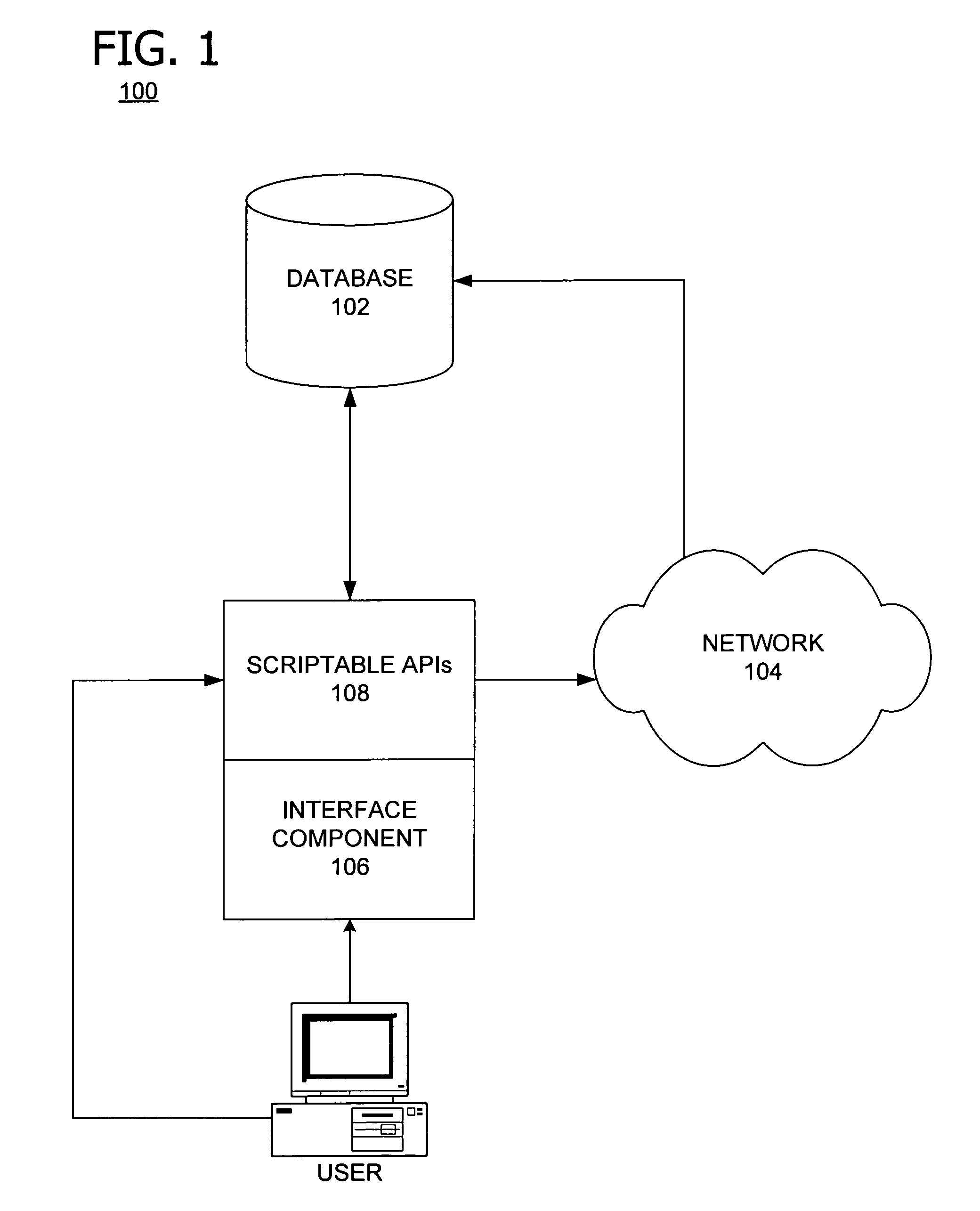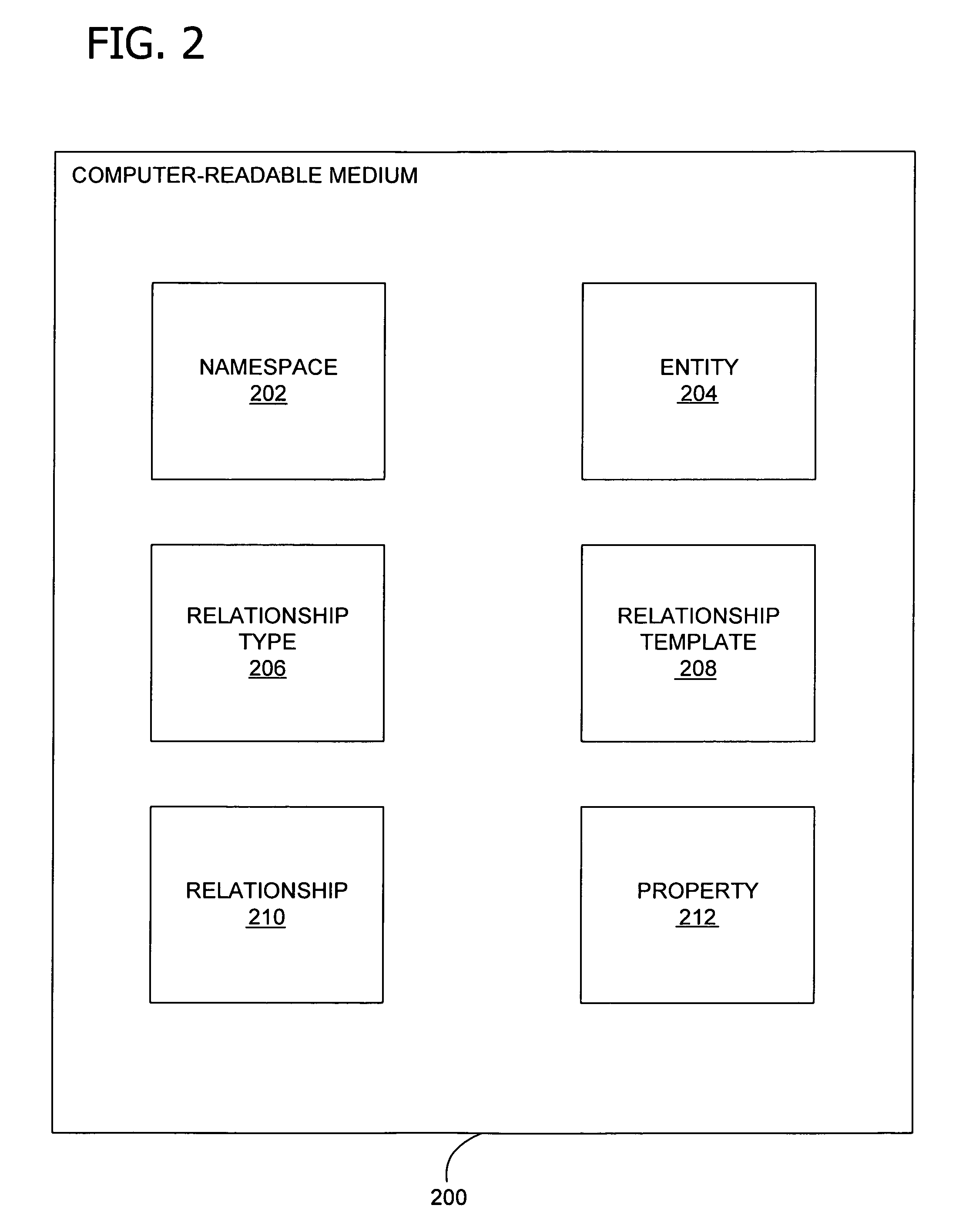Managing client configuration data
a configuration data and client technology, applied in the field of management, can solve the problems of difficult data (e.g., data) across different server groups or service classes, and the difficulty of managing or organizing a relationship among different clients, and achieve the effect of convenient implementation
- Summary
- Abstract
- Description
- Claims
- Application Information
AI Technical Summary
Benefits of technology
Problems solved by technology
Method used
Image
Examples
Embodiment Construction
[0031]According to one embodiment, the invention entails a hierarchy of configuration objects that defines and represents the configuration items that needs to be managed. In another embodiment of the invention, a notification server may carry over a desired change notification to interested clients. Moreover, an interface component, according to one embodiment of the invention, may graphically show the status of a change in configuration data. And a scriptable API, which is a backbone of the interface component, may push the change in the configuration data to a configuration database.
[0032]FIG. 1 generally illustrates an exemplary environment 100 in which embodiments of the invention may be implemented. A memory area such as a database 102 is adapted to store topology data, which through a set of data schemas and structures models the environment of a network 104. In other words, database 102 may be a data modeling tool and a repository of different entities of network 104. The ne...
PUM
 Login to View More
Login to View More Abstract
Description
Claims
Application Information
 Login to View More
Login to View More - R&D
- Intellectual Property
- Life Sciences
- Materials
- Tech Scout
- Unparalleled Data Quality
- Higher Quality Content
- 60% Fewer Hallucinations
Browse by: Latest US Patents, China's latest patents, Technical Efficacy Thesaurus, Application Domain, Technology Topic, Popular Technical Reports.
© 2025 PatSnap. All rights reserved.Legal|Privacy policy|Modern Slavery Act Transparency Statement|Sitemap|About US| Contact US: help@patsnap.com



